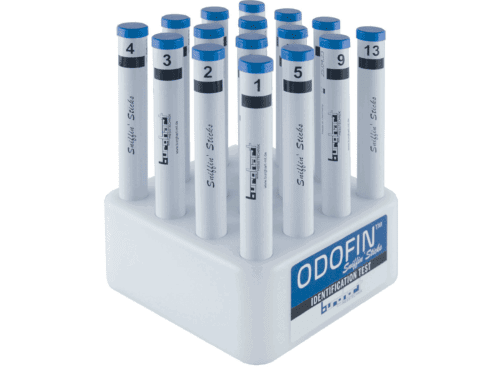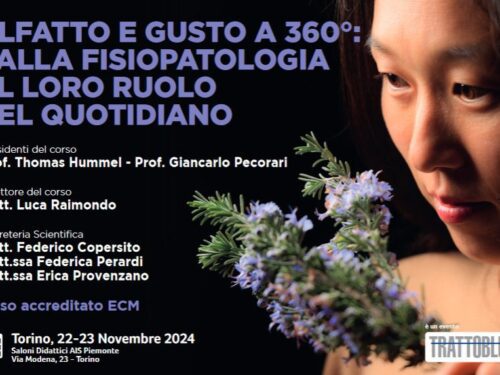
Restoring the Lost Sense: PRP Therapy for Olfactory Dysfunction? For millions of people affected by COVID-19, the loss of smell has been more than a minor inconvenience — it’s a life-altering condition that impacts everything from appetite to emotional well-being and safety. While many patients gradually regain their sense of smell, a significant number continue to suffer from long-term olfactory dysfunction, even months or years after infection. Researchers at Stanford Medicine may have found a new path to recovery: platelet-rich plasma (PRP) injections delivered directly into the nasal cavity.
What is Platelet‑Rich Plasma (PRP)?
Platelet-rich plasma (PRP) therapy involves drawing a small amount of a patient’s blood, spinning it in a centrifuge to concentrate the platelets, and then reinjecting this rich plasma into damaged tissue. Platelets are packed with growth factors that stimulate healing and regeneration. PRP has been used in sports medicine, orthopedics, and dermatology — but applying it to the nose, specifically to the olfactory cleft, is a novel idea.
The rationale is simple: the olfactory nerve has a remarkable ability to regenerate, but sometimes that natural healing process stalls. COVID-19 appears to damage the supportive cells in the olfactory epithelium, which indirectly harms the sensory neurons. PRP may help restart the repair process by reducing inflammation and promoting neural regrowth — offering the nose a much-needed “nudge,” as researchers describe it.
Stanford’s Research: From Pilot to Long-Term Benefit
At Stanford Medicine, Dr. Zara Patel, colleagues, and researchers from UC San Diego spearheaded pioneering trials exploring PRP for smell loss. Particularly post‑viral anosmia (loss of smell following infection).
In a clinical trial, Dr. Zara Patel and her team at Stanford enrolled 26 patients who had experienced smell loss for at least six months following a COVID-19 infection. These individuals had already tried conventional treatments like steroid nasal rinses and smell training without success. The participants were randomly divided into two groups: one received PRP injections into the olfactory region every two weeks over a six-week period, while the other received placebo (saline) injections. Neither the patients nor the researchers knew who was receiving which treatment.
The results were striking. After three months, those who received PRP showed significantly greater improvement in their ability to smell — as measured by standardized “ODOFIN Sniffin’ Sticks” tests — compared to the placebo group. On average, PRP recipients gained 6.25 points on the smell test scale, while the placebo group improved by just 2.58 points. Even more compelling: over half (57%) of the PRP group experienced clinically meaningful recovery, versus only 8% of those in the placebo group.
PRP in the Netherlands: Reinier de Graaf Hospital
Reinier de Graaf Hospital in Delft announced they also begun administering PRP injections to patients with anosmia—particularly post‑COVID cases and other causes like sinus conditions or trauma. Dr. Kooper and his team now treat several patients each week using this method. Most of them have tried everything: smell training, steroid treatments, or simply waiting in vain for spontaneous recovery. While results can vary from person to person, many patients report noticeable improvements. The procedure itself is considered safe, minimally invasive, and quick — performed under local anesthesia in an outpatient setting.
Ear‑nose‑throat specialist Dr. Dick Kooper explained:
Platelets contain factors that support regeneration of damaged tissue. The olfactory mucosa is one of the few tissues that can renew itself, but sometimes needs a nudge. With PRP we hope to stimulate that repair process.
The hospital officially launched the PRP treatment program in July 2025. According to their announcement, the approach is particularly aimed at people with complete smell loss (anosmia), a condition estimated to affect around 250,000 people in the Netherlands. For those patients, the availability of PRP treatment offers a new path — one grounded in emerging regenerative medicine.
This Dutch initiative builds on earlier research from countries like the United States and the United Kingdom, where clinical studies have shown positive effects of PRP in treating post-viral smell disorders.
What It Means for Patients
These findings are more than just numbers. They suggest that PRP injections may be up to 12 times more effective than placebo in restoring the sense of smell in people with post-viral olfactory loss. And because the treatment uses the patient’s own blood, it carries a low risk of serious side effects. No major adverse events were reported in the study — a promising safety profile.
Though some participants in both groups subjectively felt better, only those receiving PRP showed measurable, objective improvement. This hints at a powerful regenerative potential, especially when PRP is used relatively early in the course of smell loss.
Looking Forward: Challenges & Potential
Based on the strength of these findings, Stanford has begun offering PRP therapy as a clinical treatment outside of the research setting. Patients who have not recovered their sense of smell after several months may now have a new option — one rooted in their body’s own biology.
However, the researchers are careful to note that more work is needed. Larger studies will help determine how long the effects of PRP last, how often treatment should be repeated, and which patients are most likely to benefit. But for now, this therapy offers a hopeful alternative in a field where few effective treatments have existed.
If you or someone you know is struggling with long-term smell loss after COVID-19, PRP therapy might be worth discussing with an ENT specialist. As science continues to explore the regenerative capabilities of the human body, smell — one of our most underestimated senses — may no longer be beyond repair.
Smell Tests Used in Clinical Research
In the Stanford Medicine study, Reinier de Graaf study and international clinical applications, standardized and validated smell tests were crucial in objectively measuring changes in olfactory function. Two key tests were used:
- Extended Sniffin’ Sticks Test (Burghart, Germany)
The extended test (ODOFIN Sniffin’ Sticks) measures three key components of olfaction: odor threshold, discrimination, and identification (TDI). - UPSIT – University of Pennsylvania Smell Identification Test (Sensonics, USA)
The UPSIT is a well-established, 40-item scratch-and-sniff smell identification test with extensive normative data across age groups.
As a supplier of both the Sniffin’ Sticks and UPSIT smell tests, we support researchers, clinicians, and hospitals in conducting high-quality, evidence-based assessments of smell loss and recovery. These tools play a critical role in validating the effectiveness of emerging treatments like PRP therapy.
Why Smell Training Still Matters – Even with PRP Treatment
Smell training remains a crucial companion therapy. This simple, non-invasive method using a smell training kit helps rewire the brain through repeated exposure to specific odors. Studies show that combining PRP with regular smell training can significantly improve outcomes—faster, more complete recovery, and better long-term results.
In short: PRP helps the body heal, but smell training helps the brain relearn. The two treatments work best together.






